Automation in Construction | Advantages of Automation | Applications of Automation | Where Are Use Automation in Construction Sector
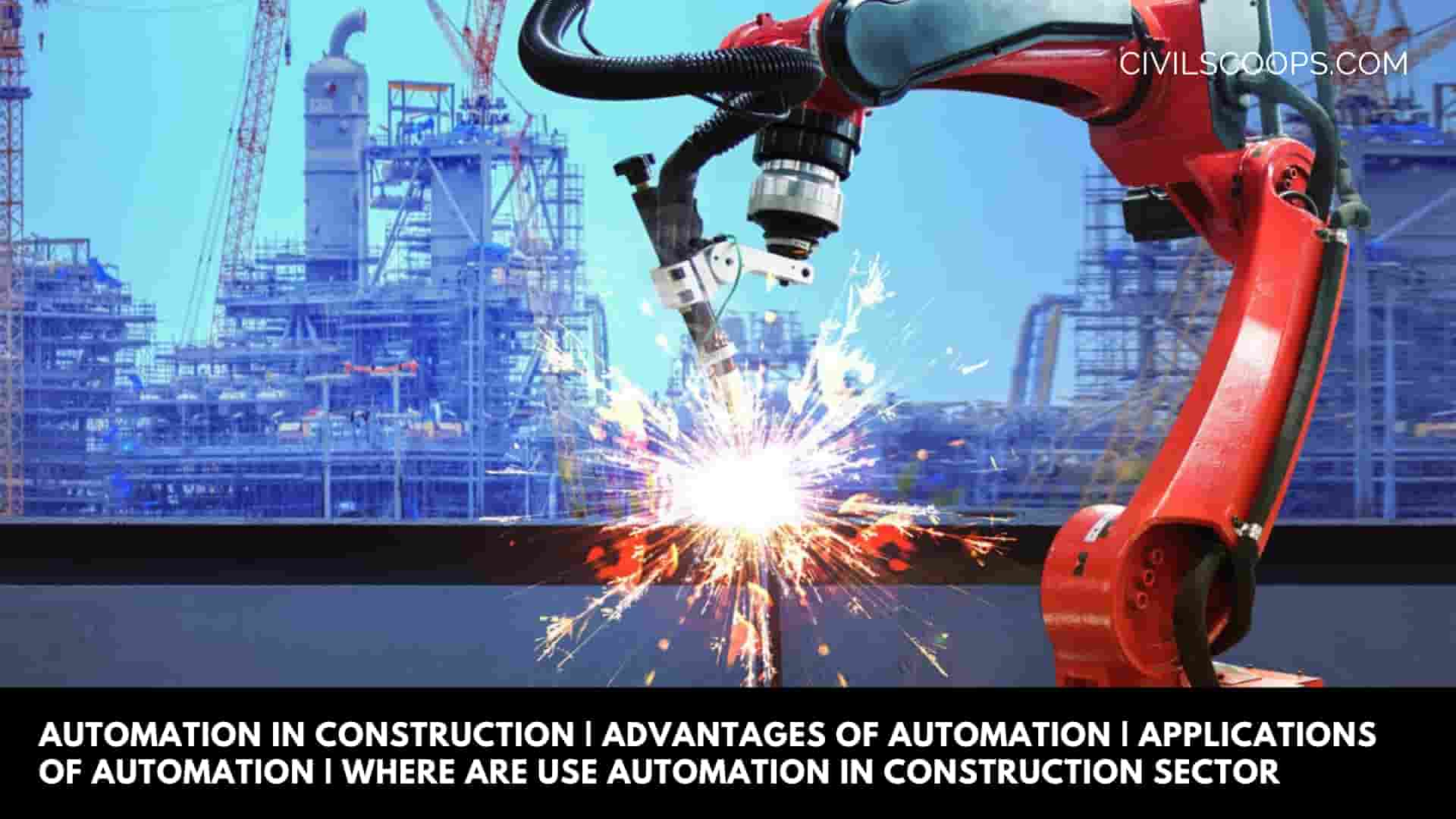
Table of Contents
Introduction of Automation in Construction
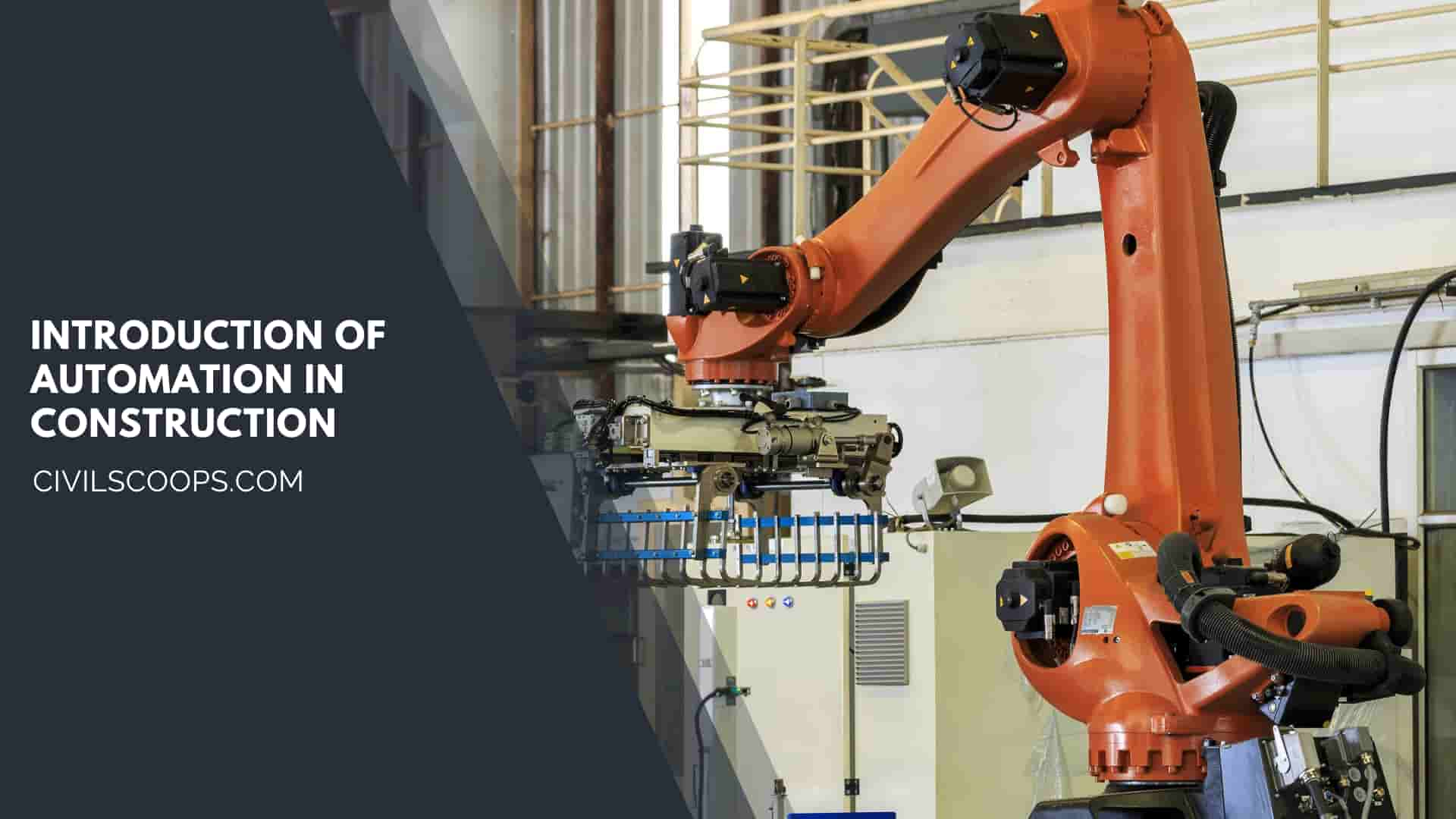
Construction is one of the largest industries all over the world. Various Reports state that the construction sector contributes to about 10% of the economy of the country.
The construction industry has one of the largest market capitalizations and potential. Despite there are many construction firms that are struggling due to a shortage of skilled workmanship and a slow rate of completion of the projects.
Nowadays there is a huge boost in construction automation. Construction automation plays a great role to improve the productivity and performance of the industry.
In this article, you will get to know all about construction Automation and its advantages and applications in the construction Industry.
Automation is defined as self-regulating with the use of computerized machines to execute various tasks. It will help to increase and improve the productivity and safety of construction projects.
Automation in Technology is mainly concerned with the application of innovative and computer-based systems to operate and control the overall method of production.
There is a huge scope in construction Automation which consists of the entire construction process. Automation in Construction Industry makes appropriate use of machines, electronic devices, and computer software for various construction works.
The main purpose of using automation and robotics in the construction industry is to reduce the effort, and time conjunction, and increase productivity so that it can be completed with less cost.
The primary need for automation in the construction industry is to increase the speed of construction with maximum productivity and to protect humans from safety and health hazards.
There are various problems which are associated with construction work such as the low quality of products and shortage of skilled workers.
All the problems that are associated with construction sites can be overcome by the implementation of automation in the construction industry. It has tremendous potential to improve the quality, safety, and productivity of the Construction Industry.
Where Are Use Automation in Construction Sector?
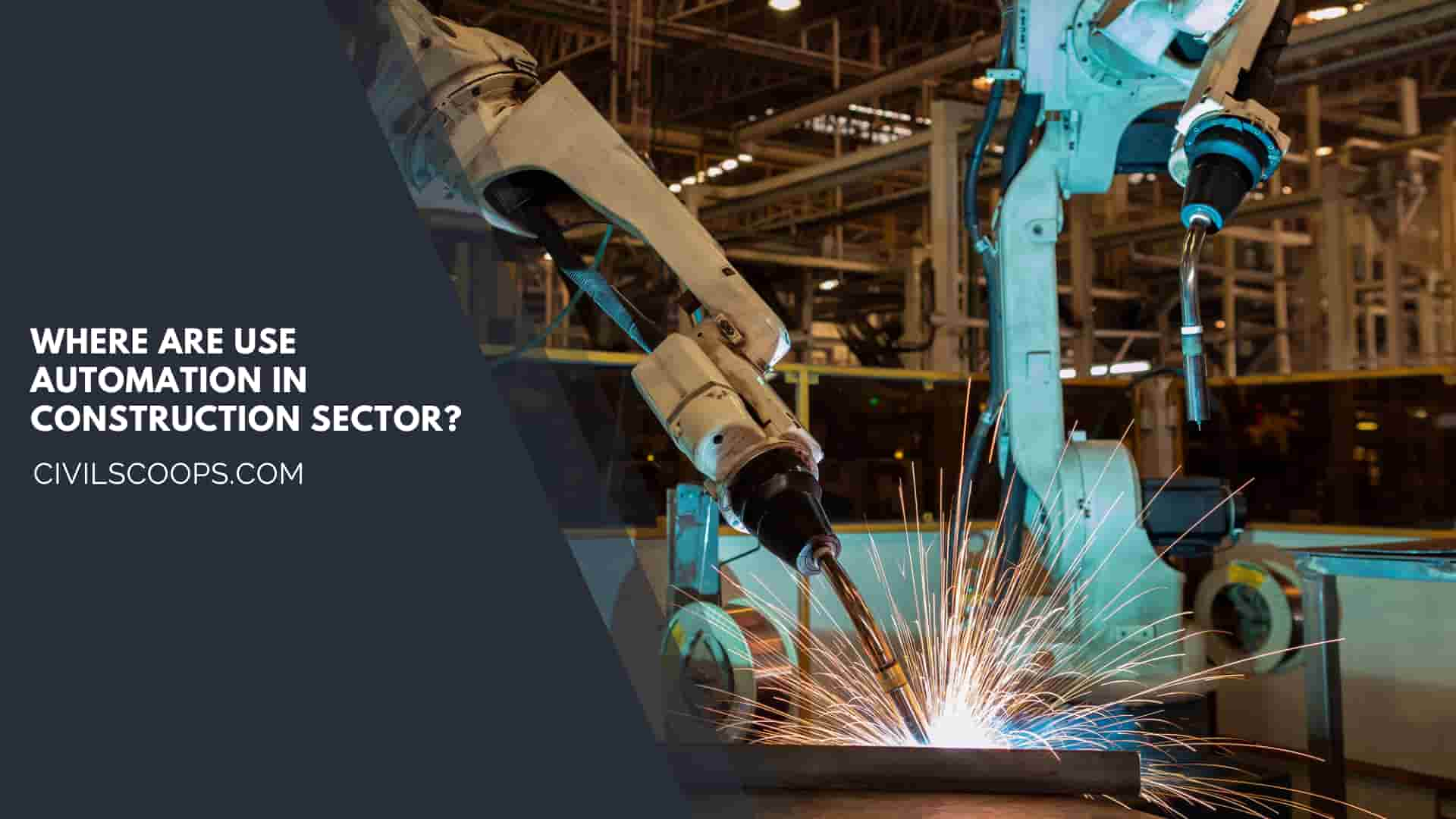
Automation in construction different areas used are as follows.
1. Automation and Robotics in Construction Sector and Precast Concrete Industry

Automation and Robotics in the construction sector and precast concrete Industry change the whole procedure of the construction Industry.
Precast concrete and Modular system take center stage in the Construction Industry. Due to constant changes in prefabrication and in situ construction, it is very necessary to adopt digital planning and various innovative working methods in the construction industry.
2. Automation and Robotics in Prefabrication of Masonry and On-Site Masonry Construction
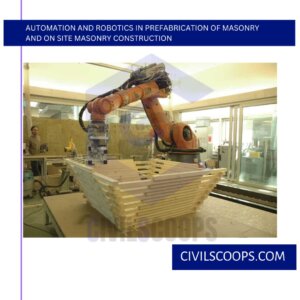
There is also advancement and the use of 3D printing of concrete is increasing day by day. The use of 3D printing with robots to produce formwork and reinforcement.
The conventional method of prefabrication can be made flexible and cheaper by using automation and robotics in the prefabrication of masonry and on-site masonry construction.
One of the main challenging tasks on the construction site is to support laborers in their work with machines. There is a need for intelligent use of planning knowledge in combination with easy configuration and adaptability on the construction site.
The highly complex megastructure can also be constructed with incremental spot welding. The development of additive manufacturing through the robot fabrication of incremental point building in steel construction technology.
3. Automation and Robotics in Timber Construction

Automation and Robotics in timber construction integrate advanced computational design. The innovation in timber construction increasing day by day with digital fabrication tools such as CNC machines having become well-established in the Timber industry.
Automation and Robotics in timber construction and advanced robotic fabrication in Timber have shown great results in the development of manufacturing processes and various construction systems.
Mass Timber construction provides a great opportunity to develop more adaptive and geometrical innovative construction projects.
4. Automation and Robotics in Production of Steel Components

There is a huge advancement in construction technology which shapes the design of the architecture from new digital information workflows. Nowadays there is the development of new processes for using machines and materials with the help of automation and robotics in the production of steel components.
This development also affects the Steel construction industry. the procedure of construction of Steel industries totally changed with the advancement in technology and with the use of automation and robotics in the construction of Steel components.
The development in the robotic fabrication of 3D printing in steel components leads to advancement in construction technology and new ways of mass customizing. In the end, automation and robotics in the construction industry help to improve the productivity and efficiency of construction methods.
Also Read: Difference Between Timber And Wood | What is Wood | What is Timber
Advantages of Automation in Construction Industry
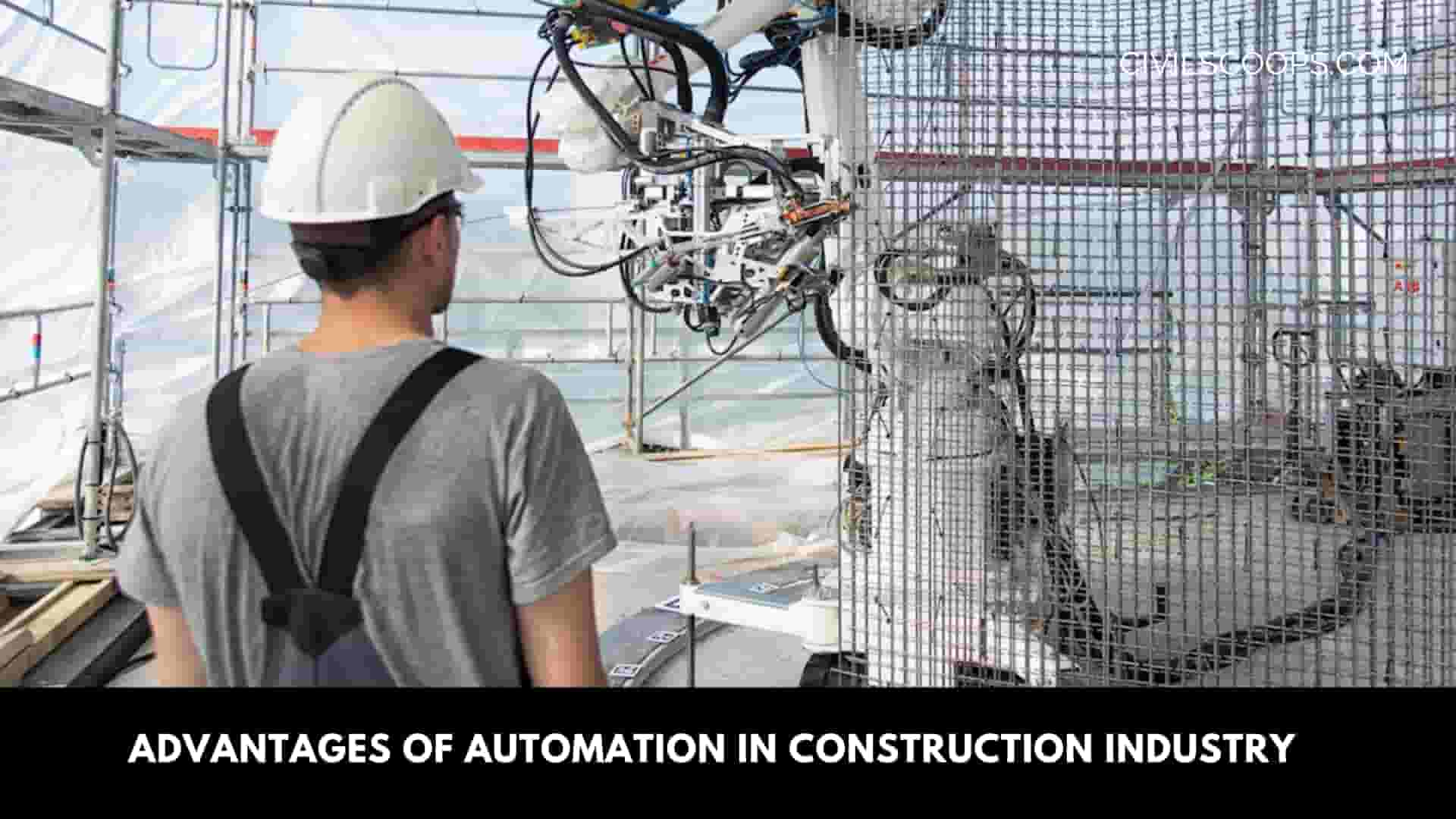
The Advantages of Construction Automation Are as Follows:
- Automation in the construction industry will easily execute jobs which is very difficult to be done with the help of laborers.
- It will help to conduct complex work in dangerous locations.
- Construction automation provides a uniform quality product with more precision.
- Automation in the construction industry provides more precise and uniform quality products.
- It improves the safety of the workers and enhances the quality of the work.
- Automation gives higher output and increased productivity with less variability.
- Automation reduces the cost required for a project and increases the efficiency and productivity of the project.
- Automation provides greater control and consistency and a safe working environment.
Applications of Automation in Construction Industry
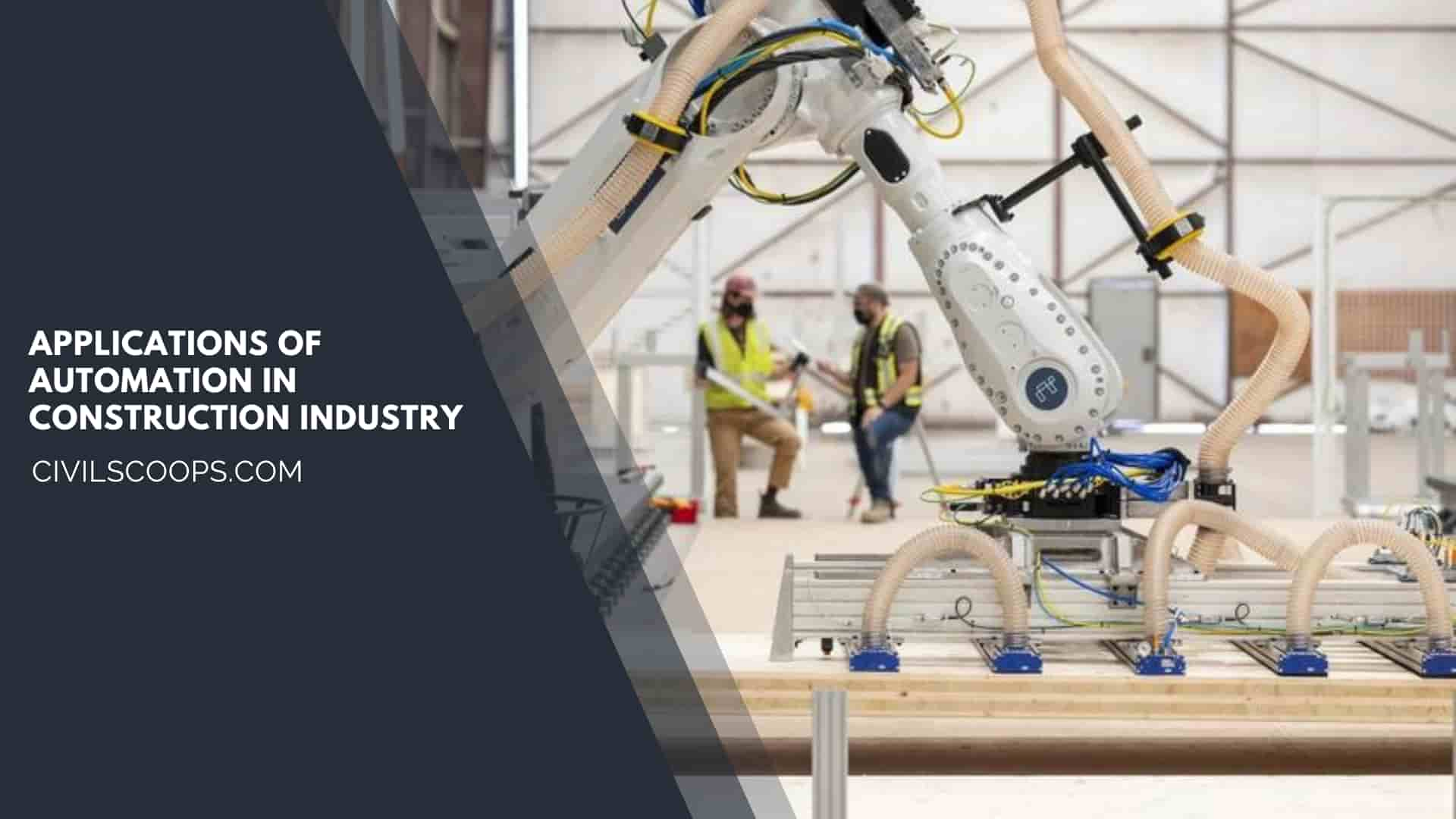
The various applications of automation in the construction industry are as follows:
- Automation in the construction industry has wide applications in timber construction.
- Automation also has applications in the construction of steel components.
- Automation is useful in on-site physical tasks such as laying bricks with the help of robots.
- It helps the project team to identify and analyze the mistakes for efficient execution of the work.
- Automation helps to conduct the various labor tasks at various locations where the workers cannot do them.
- There will be very less dependability on laborers with the use of automation in construction.
- Automation is also used in the operation and maintenance of the Buildings.
Examples of Automation and Robotics in the Construction Industry
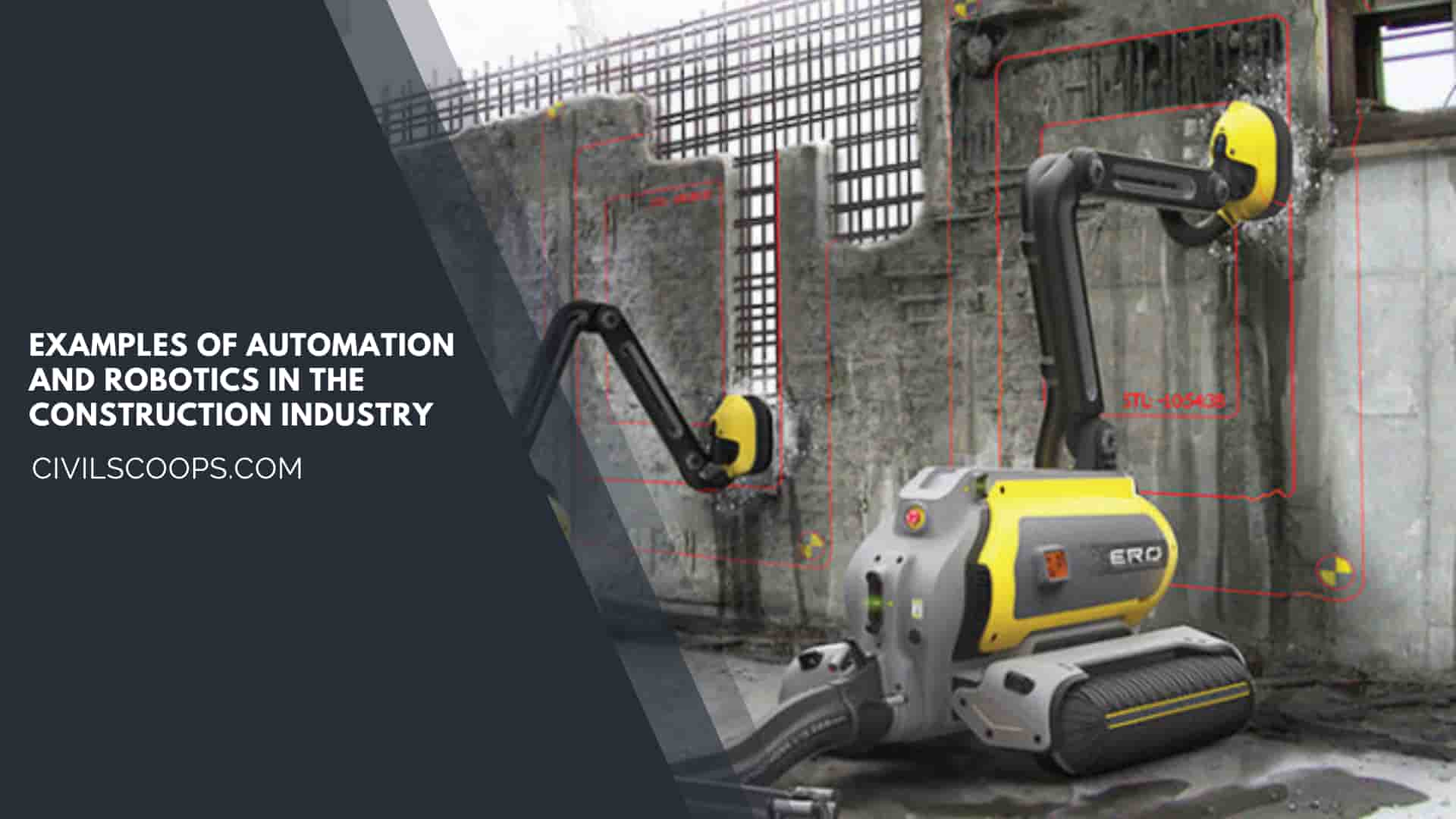
There are various examples of automation and Robotics in the construction industry which are as follows:
- Use of Drones in the survey working areas all of the automated monitoring of work sites without the need for active supervision. It will also allow construction companies to conduct free project inspections and other important site monitoring activities.
- The use of autonomous machines on the construction site is used to transport materials across the worksite and to haul heavy items without posing a risk to workers.
- The use of Robotics in concrete work is used to mix concrete and lay the cement which allows construction companies to prepare precast and ready-mix concrete products.
- Virtual Reality in the construction of all of the companies to plan for a project even before they lay down a single brick. It simulates a realistic environment that allows builders to analyze the various structures using a series of scanned images.
[su_box title=”FAQ” style=”default” box_color=”#333333″ title_color=”#FFFFFF” radius=”3″ class=”” id=””]
What Is the Purpose of Automation?
By reducing the risk of human error in common daily tasks, automation gives you predictable and repeatable processes for managing configurations to improve consistency, speed changes and increase uptime.
What Is the Purpose of Office Automation?
An office automation system is a tool that enables data to move from one system to another on its own without human intervention and inaccuracies. These tools help organizations collect, manage, and analyze securely to accomplish everyday tasks and processes.
Examples of Automation in Construction
The first is automation of what are considered traditional physical tasks on-site—for instance, robots laying bricks and machines paving roads. The second opportunity comes from the automation of modular construction—or rather production—in factories, including 3-D printing of components such as facades.
Disadvantages of Automation in Construction
Construction Automation has many drawbacks like, low quality of the final product, shortages of skilled labors, the safety of labor, poor weather condition, and short construction period which nowadays are features of the project.
Robotics in Construction Industry
It builds walls and block structures using the data from 3D CAD models of the structures. By incorporating bricklaying robots, such as Hadrian, on your construction project, you can benefit from faster masonry work, least material wastage and overall cost-efficacy in the construction project.
What Is the Biggest Benefit of Automating Processes?
The benefits of automated operations are higher productivity, reliability, availability, increased performance, and reduced operating costs. Moving to lights-out operations yields a good return on investment. The benefits of automated systems can be a powerful motive for increasing service to your end users.
How Does Automation Improve Quality?
Despite the claims of high quality from good workmanship by humans, automated systems typically perform the manufacturing process with less variability than human workers, resulting in greater control and consistency of product quality.
Automation in Construction Industry
What is Automation in Construction? Automation in construction means the process through which autonomous equipment takes part in several construction activities. The central purpose of autonomy is to reduce the workload of human labour and perform short-term operations.
What Are Three Examples of Automation?
Common examples include household thermostats controlling boilers, the earliest automatic telephone switchboards, electronic navigation systems, or the most advanced algorithms behind self-driving cars.
Which Is an Example of an Automation Tool?
Selenium. Selenium is a very well-known tool when it comes to testing automation. It allows its users to write scripts in a lot of different languages, including Java, C#, Python, Perl, and Ruby. This tool also runs in several operating systems and browsers.
What Is the Difference Between Robotics and Automation?
The terms “automation” and “robotics” are sometimes used interchangeably, but there are minor differences between the two. Automation is the process of using technology to complete human tasks. Robotics is the process of developing robots to carry out a particular function.
What Is the Difference Between Rpa and Automation?
RPA generally focuses on automating repetitive, frequently rule-based activities, whereas intelligent automation uses artificial intelligence (AI) technologies, including machine learning, natural language processing, structured data interaction, and intelligent document processing.
What Is the Difference Between Rpa and Bpa?
RPA focuses on automating individual, discrete tasks (such as reading a document or retrieving data from a system). BPA is designed to automate multiple elements of an end-to-end process, but BPA can also help businesses model, optimize, and orchestrate their workflows. RPA solves problems at the task level.
[/su_box]
[su_note note_color=”#F2F2F2 ” text_color=”#333333″ radius=”3″ class=”” id=””]
Like this post? Share it with your friends!
Suggested Read –
- What Is Building | Types of Building
- Top-Down Construction | What Is a Top-Down Construction | Advantages & Disadvantages of Top-Down Construction
- Definition of Design Period | Why Design Period is Provided | Factors Affecting Design Period | Design Period Values
- All About Mastic Asphalt Flooring | What Is the Meaning of Mastic Floor | Mastic Asphalt Flooring Cost | Where Is Asphalt Flooring Used
- What Is Modulus of Rupture | What Is Flexural Modulus | What Is Flexural Stress | Flexural Strength of Concrete | Bending Modulus | What Is Flexural Strength
[/su_note]
Originally posted 2023-03-07 10:44:25.
